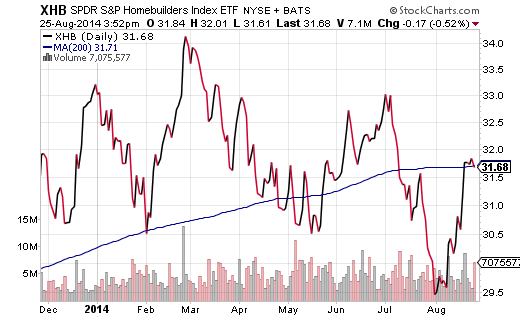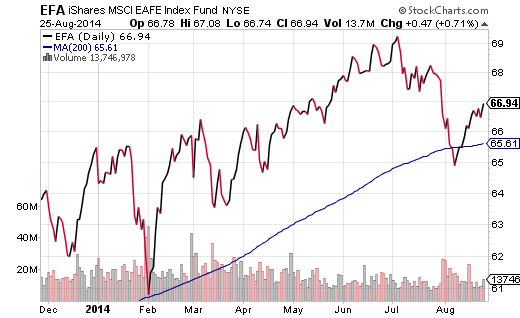At the beginning of the year, analysts and economists explained why interest rates would climb significantly. They anticipated a year-end 10-year yield of 3.4%, not 2.4%. Only a few bond-fund managers, doom-n-gloomers and contrarians dared to suggest that rates would drop. (For more on the topic, review my January commentary, Against The Herd: Lower Rates, Not Higher Rates, In 2014.)
All Over The Board
When I challenged readers to spell out the reason(s) why bonds defied expectations, the answers were as predictable as pizza at a Fantasy Football draft party. Some contributors talked about the enormous demand from pensions and a variety of larger institutions. Others explained how quantitative easing (QE) by the Federal Reserve created a supply shortage. Still others discussed the surge in demand by foreigners, as U.S. Treasuries appear attractive on a relative basis when compared to European sovereign debt.
Institutional demand, QE-created supply issues as well as relative returns over German bunds are plausible explanations. On the other hand, pension demand for bond holdings is an ever-present force. What’s more, the Fed’s balance sheet ownership of 40%-plus of the intermediate-term Treasuries in existence has been well-documented. For that matter, Europe’s battle against deflation and recession through extraordinary monetary policy stimulus was well-known. It follows that all of these excuses fizzle under the brighter lights of scrutiny; analysts and economists knew these factors and still anticipated rising interest rates.
Why were they wrong? Logically speaking, if a community of expert voices expected yields to climb, knowing the headwinds that already existed, then they believed in the strength of future economic growth. By extension, since rates have fallen, not risen, the more palpable explanation is that bond-market participants doubt the U.S. economy’s ability to sustain itself without Fed stimulus.
Bonds React
Indeed, here is how the bond market is interpreting employment data. Employed adults represented 58.5% of the total adult population at the recession’s lowest ebb. (In 2000, employed adults represent 64.5% of the adult population.) Yet employment in 2014 is still near a remarkable low at 59%. In other words, since June of 2009, U.S. population growth (12.4 million) has as much to do with the increase in jobs (6.3 million) as any notion that unemployed individuals have been getting their jobs back.
How has the bond market interpreted housing? Well, the five-decade average on new home sales per 1000 adults is 3.6. Today it is 1.64. (At the height of last decade’s mania it was at 6.14.) Or consider residential construction’s contribution to gross domestic product (GDP). Over the previous 67 years, the average contribution has been 4.7% of GDP, but today it sits at 3.2% of GDP. Moreover, lower rates in 2014 have had a tough time fortifying home building companies in SPDR S&P Homebuilders (NYSE:XHB).
Is the bond market any more confident about GDP? I am not sure how. The Bureau of Economic Analysis has shown that annual GDP dropped from 2.3% in 2012 to 2.2% in 2013. Even if the economy heats up to register consecutive quarters of 3% growth in the 2nd half of 2014 – an unlikely prospect at best – the trend will still have decelerated down to 2% for calendar year 2014. Keep in mind that 2012-2014 make up the three-year period of ”shock-and-awe” level electronic dollar creation by the Fed. So what happens without QE3? What happens without zero percent overnight lending rate policy? Nobody knows, but the bond market is certainly worried.
None of the aforementioned thoughts suggest that stocks are doomed. We just have to come to grips with the reality that risk assets are entirely dependent on investor perception of central-bank accommodation. European stocks had been languishing for months, as investors wondered if the bad batch of recessionary data points would be enough for Mario Draghi and the European Central Bank (ECB) to provide additional stimulus. His comments in Jackson Hole, Wyoming suggest that the ECB will step up its game; foreign-developed stocks in funds like iShares MSCI Eafe Index Fund (ARCA:EFA) are now back in play.
U.S. Stocks?
They may pull back, sell off, correct and consolidate. Nevertheless, as long as investors recognize that employment data are dicey (e.g., absence of wage inflation, low level of labor force participation, etc.), they’re willing to stay with U.S. equities. After all, Fed chairperson Janet Yellen fears moving away from zero percent rate policy too soon more than she fears being “behind the curve.” If you are adding to U.S. stocks, I advise steering clear of the smallest companies and incrementally purchasing the largest and least volatile ones. Consider iShares MSCI USA Minimum Volatility (NYSE:USMV) and iShares S&P 100 (NYSE:OEF).


